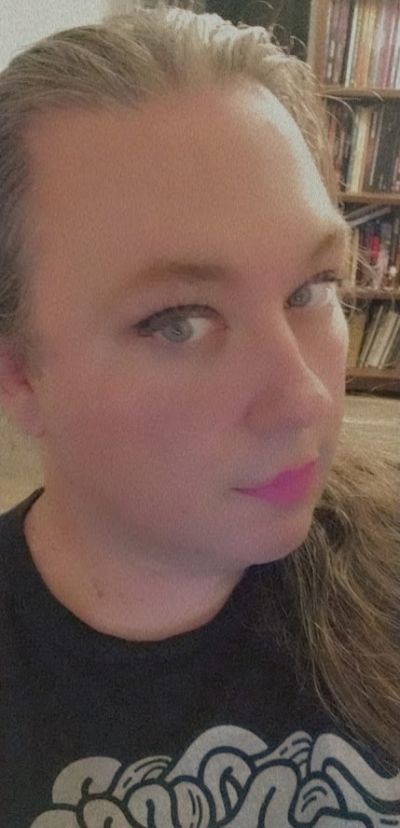Want to join in? Respond to our weekly writing prompts, open to everyone.
from Everbrightbedding
A Comprehensive Guide to Choosing a China Mattress Manufacturer
Choosing the right mattress manufacturer is one of the most important decisions for bedding brands, retailers, and hospitality businesses. With China being a global leader in mattress production, it offers countless manufacturers—but not all deliver the same level of quality, innovation, and service.
1. Focus on Quality Materials and Craftsmanship
A dependable mattress manufacturer should use premium materials such as high-density foams, natural latex, pocket springs, and certified fabrics. Everbright Bedding prioritizes quality at every step, sourcing safe, durable, and internationally compliant raw materials. With advanced production lines and strict quality-control systems, Everbright ensures every mattress meets global standards for comfort and longevity.
2. Customization Options That Fit Your Market
Every market has different preferences—firmness levels, materials, fabrics, and sizes. One of the biggest advantages of working with a top Chinese manufacturer is the ability to customize. Everbright Bedding offers full OEM/ODM services, allowing you to tailor designs, branding, and specifications to match your customers' needs. Whether you need luxury hotel mattresses or affordable retail models, the flexibility is unmatched.
3. Innovation and Technology
Modern consumers expect more than just a basic mattress. They want features like cooling technology, motion isolation, eco-friendly materials, and ergonomic support. Everbright consistently integrates new technologies such as gel-infused memory foam, breathable fabrics, edge-support systems, and hybrid designs, helping brands stand out in competitive markets.
4. Global Certifications and Compliance
When choosing a China mattress manufacturer, always check compliance with global certifications like CertiPUR-US, SGS, CFR1633 fire resistance, and ISO standards. Everbright Bedding meets international requirements, ensuring that every product is safe, durable, and ready for export to markets like the USA, Europe, Middle East, and Southeast Asia.
5. Reliable Customer Support and Logistics
A good manufacturer should offer smooth communication, fast sampling, and efficient delivery. Everbright provides responsive service, professional guidance, and well-managed shipping solutions to ensure your orders arrive on time and in perfect condition.
Final Thoughts
Finding the right China mattress manufacturer can elevate your brand and boost your business growth. With high-quality materials, customization abilities, advanced technology, and excellent service, Everbright Bedding is a partner you can trust. Whether you're starting a new bedding line or expanding your retail offerings, Everbright delivers value, reliability, and innovation at every step.
A Christmas memory of long ago, lonng past
from  The happy place
The happy place
On Christmas eve, were exactly four snowflakes gently falling from the star clear sky where the moon hung thin like in a fairy tale.
Four are a perfect number: one could be brushed off for a dandruff, but four is a strong enough pattern that confirms the bare minimum presence of falling snow.
Twenty five or thirty years ago exactly on this day I remember a darkened kitchen with a single candle burning on the kitchen table, outside it was very dark — black even — even though the white snow outside was deep to the thighs.
My cousin had bought us each an identical transformers toy, it was Ratchet, he who could transform into an ambulance. This toy had a motorcycle for some reason, because this variant couldn’t transform and so he needed the motorcycle presumably.
Anyway his father melted the tyre of mine, so it became deformed and assymetrical, over this burning flame
And my cousin traded his for mine
And I remember I thought this was fair, because it was his father who did it
It was his father who was a wacko
So it was only fair that he’d got the deformed motorcycle
But nothing about this was
Fair
Morning Baguazhang
from  Justina Revolution
Justina Revolution
I woke up and did my Cosmos Palm, Fish Flip, and Swimming Dragon Baguazhang. I feel really good. I received the message last night: Follow your way. Do not doubt your way. A gift from my old teacher Barefoot Doctor. It is my inheritance from that beautiful old Cosmic Trickster.
I trust my Way. I trust my Way. I trust my Way.
🌈
from  💚
💚
Our Father Who art in heaven Hallowed be Thy name Thy Kingdom come Thy will be done on Earth as it is in heaven Give us this day our daily Bread And forgive us our trespasses As we forgive those who trespass against us And lead us not into temptation But deliver us from evil
Amen
Jesus is Lord! Come Lord Jesus!
Come Lord Jesus! Christ is Lord!
from  💚
💚

We are the three happy years And we come with April May Who claims to know Saint John A world away from England Every blessed evening We change the drinking water And have a surefelt destiny To undesert and witness While shaking frozen hands To cheers for re-reunion And we welcome you aboard.
💚💚💚
Drown you in a shallow soil
from An Open Letter
I’m exhausted. I would have killed myself if I had a gun in front of me, but that’s honestly such a low bar. Click, and then peace. No more worries, no uncertainty or fear anymore. Is that even that bad of a thing to say?
El sueño
from  Bloc de notas
Bloc de notas
lo que puede ser olvidado es diferente a lo que es necesario recordar / lo que queda atrás es un sueño y lo que importa / como masticar el pan también
Habiter Notre Vide
from DrFox
Il est assez troublant de se rappeler que l’une des premières formulations sérieuses de ce que nous appelons aujourd’hui le Big Bang a été proposée par un prêtre. Georges Lemaître. Physicien. Mathématicien. Et homme de foi. À son époque, certains esprits avaient accès à une formation rigoureuse, complète, exigeante, où la quête de sens et la méthode scientifique pouvaient cohabiter sans se neutraliser.
Ce détail m’a toujours marqué. Il rappelle une chose simple. Chercher le vrai et chercher le sens ont longtemps avancé ensemble. Les tensions apparaissent lorsque les registres se rigidifient, lorsque l’on exige d’un langage qu’il fasse le travail d’un autre.
La théorie du Big Bang a bouleversé bien plus que notre compréhension du cosmos. Elle a fissuré une représentation profondément rassurante du monde. L’univers cessait d’être un cadre figé et éternel. Il devenait un processus. Une expansion. Une histoire en cours. Le monde n’était plus un décor immobile, mais un mouvement continu.
Quand le monde devient mouvement, l’être humain ne peut plus rester intérieurement figé sans incohérence. Une vision dynamique de l’univers appelle une vision dynamique de soi.
Changer notre compréhension de la réalité extérieure entraîne presque mécaniquement une relecture de notre monde intérieur. Si tout est en transformation, alors l’identité aussi. Si tout a une origine, alors nos récits également. Si rien n’est stable, alors nos certitudes cessent de l’être.
Il existe cependant une autre découverte scientifique, plus discrète dans l’imaginaire collectif, et pourtant tout aussi vertigineuse dans son ampleur. Elle ne regarde pas vers le ciel, mais vers l’infiniment petit. La matière n’est pas pleine. Elle est presque entièrement constituée de vide.
Les atomes, longtemps imaginés comme des briques compactes, sont en réalité de vastes espaces traversés par quelques excitations de champs. La solidité est une impression émergente. Le corps humain, avec ses muscles, ses os, sa respiration et ses organes, obéit aux mêmes lois. D’un point de vue physique, nous sommes faits en immense majorité d’espace.
Dire que nous sommes composés à plus de quatre-vingt-dix-neuf pour cent de vide est une simplification. Elle reste néanmoins juste dans ce qu’elle permet de saisir. Et ce qu’elle permet de saisir déplace profondément le regard.
Tout ce à quoi nous nous identifions spontanément occupe une part infime de ce que nous sommes. Notre biographie. Nos traumas. Nos réussites. Nos échecs. Nos pensées. Nos émotions. Nos rôles sociaux. Tout cela appartient à une mince couche de matière et de narration.
Le reste est silencieux.
Ce vide n’est pas une absence. Il est structuré, dynamique, traversé de fluctuations. En physique, le vide est un champ actif, instable, porteur de potentiel. Il constitue le socle invisible à partir duquel la matière apparaît.
À cet endroit précis, un pont devient possible.
Ce que la science décrit aujourd’hui avec des modèles et des équations rejoint une expérience intérieure connue depuis longtemps par de nombreuses traditions. Un espace en soi qui n’est pas affecté par les événements. Un lieu qui ne porte ni honte ni glorification. Un espace sans histoire.
Les mots varient selon les cultures. Vide. Présence. Conscience. Divin. Le vocabulaire importe peu. Ce qui compte, c’est la fonction.
Cette part de nous ne porte aucune trace de ce que nous avons vécu. Elle précède toute possibilité de blessure. Elle existe avant toute narration, avant toute identité, avant toute tentative de se définir. Et pourtant, elle est là. Majoritaire. Silencieuse. Disponible.
Prendre conscience de cette réalité modifie la perspective. Les douleurs restent présentes. Les conflits intérieurs continuent d’exister. Leur place change. Ils cessent d’occuper le centre. Ils deviennent des phénomènes locaux dans un espace beaucoup plus vaste.
Habiter ce vide ne demande pas une discipline complexe. Une simple pilule d’imagination suffit. Faire le mouvement de la prendre. Accepter l’expérience qu’elle révèle. Imaginer, l’espace d’un instant, ce que la science décrit déjà comme un fait.
Imaginer que ce que je perçois comme plein est constitué presque entièrement d’espace. Imaginer que sous la sensation de densité, de tension, de douleur ou d’émotion existe un champ silencieux, large, intact. Imaginer que mon corps, mes pensées, mon histoire prennent place dans quelque chose de bien plus vaste qu’eux.
La pilule agit lentement. Elle accompagne. Au début, imaginer ce vide est vertigineux. L’absence de repères crée une sensation de déséquilibre. Le mental cherche des formes familières. Le corps peut se tendre. Ce vertige fait partie du passage.
Puis quelque chose se stabilise.
À force d’y revenir, l’imagination devient plus précise, plus calme. Le vide cesse d’être une abstraction impressionnante. Il devient un espace habitable. Silencieux. Large. Les pensées continuent de circuler. Les émotions apparaissent et repartent. Le corps reste présent. Et pourtant, quelque chose ne s’y accroche plus de la même manière.
Petit à petit, ce vide cesse d’impressionner. Il devient familier. Votre perception s'affine. Vous commencez à sentir et voir que ce qui se déploie à la surface repose sur un fond intact. Que l’agitation n’occupe jamais tout l’espace. Que le calme n’a jamais disparu.
Ce vide ne nous appartient pas au sens de la possession. Il nous traverse. Nous l’empruntons au monde. Nous l’habitons le temps d’une vie. Puis nous le rendons lorsque le corps se défait. Il est à la fois impersonnel et intimement vécu. Universel et singulier.
Habiter cet espace, même brièvement, produit un effet très concret. Un changement de point de vue. Une capacité à observer ses mouvements internes sans s’y confondre. À voir naître une émotion, influencer un comportement, colorer une relation, puis se dissoudre. À comprendre comment une agitation intérieure fabrique une réalité relationnelle extérieure.
C’est une vue d’ensemble. Une position de lucidité tranquille.
La science et le sacré ouvrent un espace nouveau. Un espace sans dogme. Sans promesse. Un espace nu. Silencieux. Exigeant. Une spiritualité de posture intérieure, enracinée dans le réel.
Sana Mashiro .02
from  hustin.art
hustin.art
This post is NSFW 19+ Adult content. Viewer discretion is advised.

 (Screenshot: Yua Mikami #1 TEK-071, Debut / #2 OAE-101)
(Screenshot: Yua Mikami #1 TEK-071, Debut / #2 OAE-101)
In Connection With This Post: Sana Mashiro .01 https://hustin.art/sana-mashiro-01
Mainstream celebrities, driven by the capitalist system, are generally armored with meticulous self-management and defensive personas that leave almost no room for subtle public intimacy. Yua Mikami, who debuted in 2015 after being a member of the Japanese idol group SKE48 since 2009, is the quintessential example of this celebrity attribute transplanted into JAV.
While such “perfected AV idols” undoubtedly offer overwhelming visuals and sexual performances, their professional personas are so formidable that even as viewers stare at their fully exposed vulvas being penetrated by penises, an inherent barrier prevents them from naturally experiencing a sense of “conquest” or “defenseless innocence.” AV performers are images of celebrities who have entered the AV industry to become “underground stars”; their self-direction is intense, and their eyes exude an active, professional energy. They feel like another “celebrity” rather than the “naive girlfriend sitting right next to me.” Consequently, most innocent idol-type JAV actresses possess a kind of “paradoxical lack within perfect purity.”
 It is at this precise juncture that Sana Mashiro reveals a decisive departure from Yua Mikami, who has long been regarded as the most sophisticated replica of a mainstream idol. The peculiar déjà vu—that specific 'I’ve seen her somewhere before' vibe—that Mashiro evokes is not merely a matter of simple resemblance. Her unique position lies in the fact that she fundamentally alters the visual-perceptual conventions of consuming the private records (Vlogs) of Pan-Asian pop idols. While many AV actresses, including Mikami, have featured vlog-style clips within their works, the core difference here is not that Mashiro is “directed like an idol,” but that the viewer enters a psychological state of observing an idol’s mundane daily life. It is a memory of the attitude triggered when watching a non-celeb's private documentary or YouTube vlog. Rather than the sensation of “watching a porn star,” it is a “viewing mode” of someone's ordinary life—naturally becoming close as one indifferently follows their routine.
It is at this precise juncture that Sana Mashiro reveals a decisive departure from Yua Mikami, who has long been regarded as the most sophisticated replica of a mainstream idol. The peculiar déjà vu—that specific 'I’ve seen her somewhere before' vibe—that Mashiro evokes is not merely a matter of simple resemblance. Her unique position lies in the fact that she fundamentally alters the visual-perceptual conventions of consuming the private records (Vlogs) of Pan-Asian pop idols. While many AV actresses, including Mikami, have featured vlog-style clips within their works, the core difference here is not that Mashiro is “directed like an idol,” but that the viewer enters a psychological state of observing an idol’s mundane daily life. It is a memory of the attitude triggered when watching a non-celeb's private documentary or YouTube vlog. Rather than the sensation of “watching a porn star,” it is a “viewing mode” of someone's ordinary life—naturally becoming close as one indifferently follows their routine.
If Yua Mikami transplanted the “gaze toward a perfected mainstream idol” into AV, Mashiro brings the “indifferent viewing attitude of a non-celeb's vlog” into the frame. Even in a vlog, Mikami remains a “celebrity experience.” In contrast, within Mashiro's AV, the viewer undergoes a “psychological defection” from the generic awareness that they are consuming porn. She treats the camera not as a spectator’s gaze come to voyeuristically observe a star, but as a lens capturing her own life naturally and calmly. The public is already accustomed to such faces and expressions. This is an “uncanny familiarity” that even existing innocent idol types could not easily achieve. In this upgraded déjà vu—entering a state of doubtlessly watching a vlog rather than “watching an idol”—Mashiro's unique hyper-realism operates. This subtle, mundane familiarity is radically subverted by extreme obscenity, qualitatively changing the intensity of the psychological shock and arousal. It is a rare mutation within the JAV genealogy.
Another decisive point lies in the shocking “cross-paradox”: while possessing this strong non-celeb's familiarity, she simultaneously evokes the feeling of a top-class idol newly emerging within the mainstream industry—a “third-zone version” of Yua Mikami’s caliber. Her stunning beauty, which would allow her to debut as a top-tier star in the public entertainment world today, is crucial to this detailed evaluation of her. Even the director, in her debut pre-strip interview, remarks, “You look like an idol!“—a reaction that involuntarily blurted out, even though the industry is so jaded by an oversaturation of idol-like imagery that such a remark should have felt weary and redundant.
 Sana Mashiro possesses a face that rivals mainstream stars, yet she displays a state of “ontological defenselessness.” She clearly carries the “vulnerability” of a dazed beauty. Constitutionally, she has a voluptuous build, with a thick hip-pelvis-thigh contour. (Despite the mosaic blur) as is common with such curvaceous lower frames, her labia majora appear thick enough to substantially cover the labia minora. Due to their minimal protrusion and lack of maturity, the labia minora reveal themselves only when the labia majora are pried apart. These small, passively tucked-away minora are read as another layer of 'pure vulnerability' in contrast to her fully matured body. Her pubic hair is not exactly lush, yet it is appropriately distributed in dark, dusky brown tones around the labia majora.
Sana Mashiro possesses a face that rivals mainstream stars, yet she displays a state of “ontological defenselessness.” She clearly carries the “vulnerability” of a dazed beauty. Constitutionally, she has a voluptuous build, with a thick hip-pelvis-thigh contour. (Despite the mosaic blur) as is common with such curvaceous lower frames, her labia majora appear thick enough to substantially cover the labia minora. Due to their minimal protrusion and lack of maturity, the labia minora reveal themselves only when the labia majora are pried apart. These small, passively tucked-away minora are read as another layer of 'pure vulnerability' in contrast to her fully matured body. Her pubic hair is not exactly lush, yet it is appropriately distributed in dark, dusky brown tones around the labia majora.
As the unvarnished Real of an all-too-human body is unveiled beneath such a paragon of idol face, Sana Mashiro’s performance functions as a top-tier version where one can witness the stark exposure of the most beautiful 'innocent idol's' vulva as her cute hole is intensely poked by fingers or a cock, eventually culminating in the supple, brilliant eruption and drenching overflow of her pussy juices. After her vagina has been sufficiently—and safely—indulged, Mashiro demurely sinks to her knees and, with a deeply absorbed expression, dutifully encloses the thick penis with her dainty mouth. The exotic and thrilling friction that arises in the moment when the foreskin is rubbed against the glans pushes the transgressive pleasure of protecting and conquering a girl with a mainstream idol appearance—under conditions of minimal psychological resistance—to its peak. It is a “response of authenticity” and a “fervent tribute” to her unique hyper-realistic manifestation of primal vitality, overwhelming the existential shame inherent in the impulsive act. (Screenshot: Sana Mashiro #1 MIDA-381 / #2–#6 MIDA-210, Debut)
In Connection With This Post:
#JAV #PornAesthetics #SanaMashiro #debut2025




from  Silent Sentinel
Silent Sentinel
A Letter on the Meaning of Christmas
en español al final
When I was nine years old, I wrote a short story for my reading class about the true meaning of Christmas.
I don’t remember every word of it, but I remember the instinct behind it—the sense that Christmas was about something deeper than gifts, noise, or performance. Even then, I knew it wasn’t a holiday you could reduce to decoration or tradition alone.
I didn’t outgrow that understanding.
I had to live long enough for it to be tested.
Now I am older, and I carry a fuller understanding of what Christmas truly means—not because life made it easier to believe, but because it made it harder not to.
Christmas does not arrive in a gentle world.
It never has.
It comes into a world marked by conflict, fear, division, and exhaustion. A world that measures worth by productivity, power, attention, and certainty. A world that tells us to harden ourselves, to win, to protect our own, to move faster, louder, and stronger than everyone else.
We are being trained to react, to choose sides quickly, to measure worth by volume and visibility. Christmas interrupts that training. It does not shout. It does not coerce. It does not demand alignment. It simply arrives.
That is precisely what Christmas contradicts.
Christmas is not about resolution.
It is not about reward for good behavior.
It is not about pretending that suffering can be wrapped up neatly by the end of December.
Christmas is about God choosing nearness over distance.
It is about hope arriving without leverage.
About light appearing without explanation.
About love entering the world without demanding that the world be ready for it.
Nothing about the birth of Christ suggests control, dominance, or spectacle. There is no triumphal entrance, no proof offered, no conditions set. Just presence. Just vulnerability. Just a refusal to stay removed from human pain.
That is the cost of Christmas.
God does not bypass suffering—He enters it.
He does not eliminate waiting—He inhabits it.
He does not solve the world from above—He walks into it from below.
I understand Christmas more fully now not because I know more—but because I have been untrained from believing that power looks loud, fast, or victorious.
This year has taught me how unfinished life can feel. How much remains unresolved. How often faith looks less like certainty and more like staying.
Staying present.
Staying open.
Staying faithful when clarity has not yet arrived.
And I’ve come to understand that this is not a failure of Christmas—it is its setting.
Christmas was never meant for people who have everything figured out.
It was meant for people awake in the dark.
For those living between what has ended and what has not yet begun.
For those who know that effort alone cannot hold life together.
What I sensed at nine, I now understand with my whole life:
Christmas is not about escape from the world as it is.
It is about God coming anyway.
Coming into confusion.
Coming into grief.
Coming into fear, and noise, and unfinished stories.
If Christmas still means anything, it means this:
You are not forgotten in the waiting.
You are not behind in the becoming.
And the presence that entered the world then still enters it now—quietly, faithfully, without announcement.
This is the true meaning of Christmas.
© SilentSentinel, 2025. All rights reserved. Excerpts may be shared with attribution.
Una carta sobre el significado de la Navidad
Cuando tenía nueve años, escribí un cuento corto para mi clase de lectura sobre el verdadero significado de la Navidad.
No recuerdo cada palabra, pero sí recuerdo el instinto que lo impulsaba: la certeza de que la Navidad trataba de algo más profundo que los regalos, el ruido o la actuación. Incluso entonces, sabía que no era una festividad que pudiera reducirse solo a decoración o tradición.
No superé esa comprensión.
Tuve que vivir lo suficiente para que fuera puesta a prueba.
Ahora soy mayor, y llevo una comprensión más plena de lo que realmente significa la Navidad—no porque la vida la haya hecho más fácil de creer, sino porque la hizo más difícil no creerla.
La Navidad no llega a un mundo apacible.
Nunca lo ha hecho.
Llega a un mundo marcado por el conflicto, el miedo, la división y el agotamiento. Un mundo que mide el valor por la productividad, el poder, la atención y la certeza. Un mundo que nos dice que nos endurezcamos, que ganemos, que protejamos lo nuestro, que nos movamos más rápido, más fuerte y más ruidosamente que los demás.
Estamos siendo entrenados para reaccionar, para elegir bandos rápidamente, para medir el valor por el volumen y la visibilidad. La Navidad interrumpe ese entrenamiento. No grita. No coacciona. No exige alineación. Simplemente llega.
Eso es precisamente lo que la Navidad contradice.
La Navidad no trata de resolución.
No trata de recompensa por buen comportamiento.
No trata de fingir que el sufrimiento puede envolverse prolijamente antes de que termine diciembre.
La Navidad trata de que Dios elija la cercanía en lugar de la distancia.
De que la esperanza llegue sin palancas.
De que la luz aparezca sin explicación.
De que el amor entre en el mundo sin exigir que el mundo esté preparado para él.
Nada en el nacimiento de Cristo sugiere control, dominio o espectáculo. No hay una entrada triunfal, no se ofrece prueba alguna, no se imponen condiciones. Solo presencia. Solo vulnerabilidad. Solo una negativa a permanecer apartado del dolor humano.
Ese es el costo de la Navidad.
Dios no evita el sufrimiento—entra en él.
No elimina la espera—la habita.
No resuelve el mundo desde arriba—camina dentro de él desde abajo.
Entiendo la Navidad más plenamente ahora no porque sepa más, sino porque he sido desaprendido de creer que el poder se ve ruidoso, rápido o victorioso.
Este año me ha enseñado cuán inacabada puede sentirse la vida. Cuánto permanece sin resolver. Cuán a menudo la fe se parece menos a la certeza y más a permanecer.
Permanecer presente.
Permanecer abierto.
Permanecer fiel cuando la claridad aún no ha llegado.
Y he llegado a comprender que esto no es un fracaso de la Navidad—es su escenario.
La Navidad nunca fue hecha para quienes lo tienen todo resuelto.
Fue hecha para quienes están despiertos en la oscuridad.
Para quienes viven entre lo que ha terminado y lo que aún no ha comenzado.
Para quienes saben que el esfuerzo por sí solo no puede mantener la vida unida.
Lo que percibí a los nueve años, ahora lo entiendo con toda mi vida:
La Navidad no trata de escapar del mundo tal como es.
Trata de que Dios venga de todos modos.
Viniendo a la confusión.
Viniendo al duelo.
Viniendo al miedo, al ruido y a las historias inconclusas.
Si la Navidad todavía significa algo, significa esto:
No estás olvidado en la espera.
No vas tarde en el llegar a ser.
Y la presencia que entró en el mundo entonces sigue entrando ahora—silenciosa, fiel, sin anuncio.
Este es el verdadero significado de la Navidad.
© SilentSentinel, 2025. Todos los derechos reservados. Se pueden compartir extractos con atribución.
🇸🇪
from  💚
💚
The Holy Spirit is in Ace of Base.
Tell everyone.
from  💚
💚
I Waved To The Modern Sky
And I knew I was alone Forty years of growing near To the Dublin I was from Salt wars were latent here Butter thorns from a passing cab Intonations of a war Giving too much information Going on to get lost When I see the site is fleeting In a northern light The brightest flare is leading These things I’m finding here Make off with the British fear I was best to you today Now we’re feeling so alone
I live in apartment one And have a desk without your pen Joy and you- And a handsome cat The miracle we grew In an autumn to believe
So far we are Northern stars An inhibited land And a bit too much to temper Wanton of a clapping hand Five hours to go and I can feel our precious dawn The longest bay at war While we simple down the news
When the sturgeon come When we pray for rain To the woodmen blame It was a sonic of redemption But I know this curve And you are my prayer I’ll be flying soon again Ageless and tempered At the hotel where I found you Spying on me well We are both between the year And the last one we made into us
Eye five expression And I am always onto you If you had been my war There would be much ado agree But I am swollen with your love And a man who can’t repeat There in stages we had news In that Colorado apartment Now we’re feeling like slagging one The fittest and simplest thing done And we made it off to Sweden There is still an Earth in there And we both know where And we’ll fly across the mountain Smiling to the faithful doves To the near and far And we will sky the day And be lost of war And I am picturing you in Heaven We were blessed of our new accounts And the Southern towns And be on our Cross And we will never care For the sky up there Til the day of time When I promise you are mine And we will both live on forever
❄️
from  💚
💚
Please Love December
Insanity date And friends of public find We were this in health And a place of war on death New romances in a glow And singing frosty few I am afraid of nothing after This place by home is you And why our atmosphere will remember A better time in Greenland Not proper for courses act to free The glitter all in Rome Best to see the frightened man Whose world was a war Little echoes of exhalted evil A place of thousands more
To sweet husbands and general dew White lines across the matter It’s six of spades and ten to eight I suffer you to know Why sit this wooden bridge with us I know I am alone Is Sweden ours or do we lust For things unseen but known
In efforts across our lonely path I give in to China women And first to kiss is arable here But rain falls on the border Simple friends from Family Day We brought you in upon this land In sipping rain, a beautiful Southern A place to know the sea
A newer place, the one we love Insurance all the same by war Our efforts not withstanding mines We pray for one in justice And six neutered shoes of Seoul Portend in North Korea Affairs on film and lines of pay We’ll take Communion today
Productivity Up, Expertise Down: The Uncomfortable Truth About AI Copilots
from  SmarterArticles
SmarterArticles

The promise of AI copilots sounds almost too good to be true: write code 55% faster, resolve customer issues 41% more quickly, slash content creation time by 70%, all whilst improving quality. Yet across enterprises deploying these tools, a quieter conversation is unfolding. Knowledge workers are completing tasks faster but questioning whether they're developing expertise or merely becoming efficient at prompt engineering. Finance teams are calculating impressive returns on investment whilst HR departments are quietly mapping skills that seem to be atrophying.
This tension between measurable productivity and less quantifiable expertise loss sits at the heart of enterprise AI adoption in 2025. A controlled experiment with GitHub Copilot found that developers completed tasks 55.8% faster than those without AI assistance. Microsoft's analysis revealed that their Copilot drove up to 353% ROI for small and medium businesses. Customer service representatives using AI training resolve issues 41% faster with higher satisfaction scores.
Yet these same organisations are grappling with contradictory evidence. A 2025 randomised controlled trial found developers using AI tools took 19% longer to complete tasks versus non-AI groups, attributed to over-reliance on under-contextualised outputs and debugging overhead. Research published in Cognitive Research: Principles and Implications in 2024 suggests that AI assistants might accelerate skill decay among experts and hinder skill acquisition among learners, often without users recognising these effects.
The copilot conundrum, then, is not whether these tools deliver value but how organisations can capture the productivity gains whilst preserving and developing human expertise. This requires understanding which tasks genuinely benefit from AI assistance, implementing governance frameworks that ensure quality without bureaucratic paralysis, and creating re-skilling pathways that prepare workers for a future where AI collaboration is foundational rather than optional.
Where AI Copilots Actually Deliver Value
The hype surrounding AI copilots often obscures a more nuanced reality: not all tasks benefit equally from AI assistance, and the highest returns cluster around specific, well-defined patterns.
Code Generation and Software Development
Software development represents one of the clearest success stories, though the picture is more complex than headline productivity numbers suggest. GitHub Copilot, powered by OpenAI's models, demonstrated in controlled experiments that developers with AI access completed tasks 55.8% faster than control groups. The tool currently writes 46% of code and helps developers code up to 55% faster.
A comprehensive evaluation at ZoomInfo, involving over 400 developers, showed an average acceptance rate of 33% for AI suggestions and 20% for lines of code, with developer satisfaction scores of 72%. These gains translate directly to bottom-line impact: faster project completion, reduced time-to-market, and the ability to allocate developer time to strategic rather than routine work.
However, the code quality picture introduces important caveats. Whilst GitHub's research suggests that developers can focus more on refining quality when AI handles functionality, other studies paint a different picture: code churn (the percentage of lines reverted or updated less than two weeks after authoring) is projected to double in 2024 compared to its 2021 pre-AI baseline. Research from Uplevel Data Labs found that developers with Copilot access saw significantly higher bug rates whilst issue throughput remained consistent.
The highest ROI from coding copilots comes from strategic deployment: using AI for boilerplate code, documentation, configuration scripting, and understanding unfamiliar codebases, whilst maintaining human oversight for complex logic, architecture decisions, and edge cases.
Customer Support and Service
Customer-facing roles demonstrate perhaps the most consistent positive returns from AI copilots. Sixty per cent of customer service teams using AI copilot tools report significantly improved agent productivity. Software and internet companies have seen a 42.7% improvement in first response time, reducing wait times whilst boosting satisfaction.
Mid-market companies typically see 60-80% of conversation volume automated, with AI handling routine enquiries in 30-45 seconds compared to 3-5 minutes for human agents. Best-in-class implementations achieve 75-85% first-contact resolution, compared to 40-60% with traditional systems. The average ROI on AI investment in customer service is $3.50 return for every $1 invested, with top performers seeing up to 8x returns.
An AI-powered support agent built with Microsoft Copilot Studio led to 20% fewer support tickets through automation, with a 70% success rate and high satisfaction scores. Critically, the most successful implementations don't replace human agents but augment them, handling routine queries whilst allowing humans to focus on complex, emotionally nuanced, or high-value interactions.
Content Creation and Documentation
Development time drops by 20-35% when designers effectively use generative AI for creating training content. Creating one hour of instructor-led training traditionally requires 30-40 hours of design and development; with effective use of generative AI tools, organisations can streamline this to 12-20 hours.
BSH Home Appliances, part of the Bosch Group, achieved a 70% reduction in external video production costs using AI-generated video platforms, whilst seeing 30% higher engagement. Beyond Retro, a UK and Sweden vintage clothing retailer, created complete courses in just two weeks, upskilled 140 employees, and expanded training to three new markets using AI-powered tools.
The ROI calculation is straightforward: a single compliance course can cost £3,000 to £8,000 to build from scratch using traditional methods. Generative AI costs start at $0.0005 per 1,000 characters using services like Google PaLM 2 or $0.001 to $0.03 per 1,000 tokens using OpenAI GPT-3.5 or GPT-4, representing orders of magnitude cost reduction.
However, AI hallucination, where models generate plausible but incorrect information, represents arguably the biggest hindrance to safely deploying large language models into production systems. Research concludes that eliminating hallucinations in LLMs is fundamentally impossible. High-ROI content applications are those with clear fact-checking processes: marketing copy reviewed for brand consistency, training materials validated against source documentation, and meeting summaries verified by participants.
Data Analysis and Business Intelligence
AI copilots in data analysis offer compelling value propositions, particularly for routine analytical tasks. Financial analysts using AI techniques deliver forecasting that is 29% more accurate. Marketing teams leveraging properly implemented AI tools generate 38% more qualified leads. Microsoft Copilot is reported to be 4x faster in summarising meetings than manual effort.
Guardian Life Insurance Company's disability underwriting team pilot demonstrated that underwriters using generative AI tools to summarise documentation save on average five hours per day, helping achieve end-to-end process transformation goals whilst ensuring compliance.
Yet the governance requirements for analytical copilots are particularly stringent. Unlike customer service scripts or marketing copy, analytical outputs directly inform business decisions. High-ROI implementations invariably include validation layers: cross-checking AI analyses against established methodologies, requiring subject matter experts to verify outputs before they inform decisions, and maintaining audit trails of how conclusions were reached.
The Pattern Behind the Returns
Examining these high-ROI applications reveals a consistent pattern. AI copilots deliver maximum value when they handle well-defined, repeatable tasks with clear success criteria, augment rather than replace human judgement, include verification mechanisms appropriate to the risk level, free human time for higher-value work requiring creativity or judgement, and operate within domains where training data is abundant and patterns are relatively stable.
Conversely, ROI suffers when organisations deploy AI copilots for novel problems without clear patterns, in high-stakes decisions without verification layers, or in rapidly evolving domains where training data quickly becomes outdated.
Governance Without Strangulation
The challenge facing organisations is designing governance frameworks robust enough to ensure quality and manage risks, yet flexible enough to enable innovation and capture productivity gains.
The Risk-Tiered Approach
Leading organisations are implementing tiered governance frameworks that calibrate oversight to risk levels. The European Union's Artificial Intelligence Act, entering force on 1 August 2024 and beginning substantive obligations from 2 February 2025, categorises AI systems into four risk levels: unacceptable, high, limited, and minimal.
This risk-based framework translates practically into differentiated review processes. For minimal-risk applications such as AI-generated marketing copy or meeting summaries, organisations implement light-touch reviews: automated quality checks, spot-checking by subject matter experts, and user feedback loops. For high-risk applications involving financial decisions, legal advice, or safety-critical systems, governance includes mandatory human review, audit trails, bias testing, and regular validation against ground truth.
Guardian Life exemplifies this approach. Operating in a highly regulated environment, the Data and AI team codified potential risk, legal, and compliance barriers and their mitigations. Guardian created two tracks for architectural review: a formal architecture review board for high-risk systems and a fast-track review board for lower-risk applications following established patterns.
Hybrid Validation Models
The impossibility of eliminating AI hallucinations necessitates validation strategies that combine automated checks with strategic human review.
Retrieval Augmented Generation (RAG) grounds AI outputs in verified external knowledge sources. Research demonstrates that RAG improves both factual accuracy and user trust in AI-generated answers by ensuring responses reference specific, validated documents rather than relying solely on model training.
Prompt engineering reduces ambiguity by setting clear expectations. Chain-of-thought prompting, where AI explains reasoning step-by-step, has been shown to improve transparency and accuracy. Using low temperature values (0 to 0.3) produces more focused, consistent, and factual outputs.
Automated quality metrics provide scalable first-pass evaluation. Traditional techniques like BLEU, ROUGE, and METEOR focus on n-gram overlap for structured tasks. Newer metrics like BERTScore and GPTScore leverage deep learning models to evaluate semantic similarity. However, these tools often fail to assess factual accuracy, originality, or ethical soundness, necessitating additional validation layers.
Strategic human oversight targets review where it adds maximum value. Rather than reviewing all AI outputs, organisations identify categories requiring human validation: novel scenarios the AI hasn't encountered, high-stakes decisions with significant consequences, outputs flagged by automated quality checks, and representative samples for ongoing quality monitoring.
Privacy-Preserving Frameworks
Data privacy concerns represent one of the most significant barriers to AI adoption. According to late 2024 survey data, 57% of organisations cite data privacy as the biggest inhibitor of generative AI adoption, with trust and transparency concerns following at 43%.
Organisations are responding by investing in Privacy-Enhancing Technologies. Federated learning allows AI models to train on distributed datasets without centralising sensitive information. Differential privacy adds mathematical guarantees that individual records cannot be reverse-engineered from model outputs.
The regulatory landscape is driving these investments. The European Data Protection Board launched a training programme for data protection officers in 2024. Beyond Europe, NIST published a Generative AI Profile and Secure Software Development Practices. Singapore, China, and Malaysia published AI governance frameworks in 2024.
Quality KPIs That Actually Matter
According to a 2024 global survey of 1,100 technology executives and engineers, 40% believed their organisation's AI governance programme was insufficient in ensuring safety and compliance of AI assets. This gap often stems from measuring the wrong things.
Leading implementations measure accuracy and reliability metrics (error rates, hallucination frequency, consistency across prompts), user trust and satisfaction (confidence scores, frequency of overriding AI suggestions, time spent reviewing AI work), business outcome metrics (impact on cycle time, quality of deliverables, customer satisfaction), audit and transparency measures (availability of audit trails, ability to explain outputs, documentation of training data sources), and adaptive learning indicators (improvement in accuracy over time, reduction in corrections needed).
Microsoft's Business Impact Report helps organisations understand how Copilot usage relates to KPIs. Their sales organisation found high Copilot usage correlated with +5% in sales opportunities, +9.4% higher revenue per seller, and +20% increase in close rates.
The critical insight is that governance KPIs should measure outcomes (quality, accuracy, trust) rather than just inputs (adoption, usage, cost). Without outcome measurement, organisations risk optimising for efficiency whilst allowing quality degradation.
Measuring What's Being Lost
The productivity gains from AI copilots are relatively straightforward to measure: time saved, costs reduced, throughput increased. The expertise being lost or development being hindered is far more difficult to quantify, yet potentially more consequential.
The Skill Decay Evidence
Research published in Cognitive Research: Principles and Implications in 2024 presents a sobering theoretical framework. AI assistants might accelerate skill decay among experts and hinder skill acquisition among learners, often without users recognising these deleterious effects. The researchers note that frequent engagement with automation induces skill decay, and given that AI often takes over more advanced cognitive processes than non-AI automation, AI-induced skill decay is a likely consequence.
The aviation industry provides the most extensive empirical evidence. A Federal Aviation Administration research study from 2022-2024 investigated how flightpath management cognitive skills are susceptible to degradation. Study findings suggest that declarative knowledge of flight management systems and auto flight systems are more susceptible to degradation than other knowledge types.
Research using experimental groups (automation, alternating, and manual) found that the automation group showed the most performance degradation and highest workload, whilst the alternating group presented reduced performance degradation and workload, and the manual group showed the least performance degradation.
Healthcare is encountering similar patterns. Research on AI dependence demonstrates cognitive effects resulting from reliance on AI, such as increased automation bias and complacency. When AI tools routinely provide high-probability differentials ranked by confidence and accompanied by management plans, the clinician's incentive to independently formulate hypotheses diminishes. Over time, this reliance may result in what aviation has termed the “automation paradox”: as system accuracy increases, human vigilance and skill degrade.
The Illusions AI Creates
Perhaps most concerning is emerging evidence that AI assistants may prevent experts and learners from recognising skill degradation. Research identifies multiple types of illusions: believing they have deeper understanding than they actually do because AI can produce sophisticated explanations on demand (illusion of explanatory depth), believing they are considering all possibilities rather than only those surfaced by the AI (illusion of exploratory breadth), and believing the AI is objective whilst failing to consider embedded biases (illusion of objectivity).
These illusions create a positive feedback loop. Workers feel they're performing well because AI enables them to produce outputs quickly, receive positive feedback because outputs meet quality standards when AI is available, yet lose the underlying capabilities needed to perform without AI assistance.
Researchers have introduced the concept of AICICA (AI Chatbot-Induced Cognitive Atrophy), hypothesising that overreliance on AI chatbots may lead to broader cognitive decline. The “use it or lose it” brain development principle stipulates that neural circuits begin to degrade if not actively engaged. Excessive reliance on AI chatbots may result in underuse and subsequent loss of cognitive abilities, potentially affecting disproportionately those who haven't attained mastery, such as children and adolescents.
Measurement Frameworks Emerging
Organisations are developing frameworks to quantify deskilling risk, though methodologies remain nascent. Leading approaches include comparative performance testing (periodically testing workers on tasks both with and without AI assistance), skill progression tracking (monitoring how quickly workers progress from junior to senior capabilities), novel problem performance (assessing performance on problems outside AI training domains), intervention recovery (measuring how quickly workers adapt when AI systems are unavailable), and knowledge retention assessments (testing foundational knowledge periodically).
Loaiza and Rigobon (2024) introduced metrics that separately measure automation risk and augmentation potential, alongside an EPOCH index of human capabilities uniquely resistant to machine substitution. Their framework distinguishes between high-exposure, low-complementarity occupations (at risk of replacement) and high-exposure, high-complementarity occupations (likely to be augmented).
The Conference Board's AI and Automation Risk Index ranks 734 occupations by capturing composition of work tasks, activities, abilities, skills, and contexts unique to each occupation.
The measurement challenge is that deskilling effects often manifest over years rather than months, making them difficult to detect in organisations focused on quarterly metrics. By the time skill degradation becomes apparent, the expertise needed to function without AI may have already eroded significantly.
Re-Skilling for an AI-Collaborative Future
If AI copilots are reshaping work fundamentally, the question becomes how to prepare workers for a future where AI collaboration is baseline capability.
The Scale of the Challenge
The scope of required re-skilling is staggering. According to a 2024 report, 92% of technology roles are evolving due to AI. A 2024 BCG study found that whilst 89% of respondents said their workforce needs improved AI skills, only 6% said they had begun upskilling in “a meaningful way.”
The gap between recognition and action is stark. Only 14% of organisations have a formal AI training policy in place. Just 8% of companies have a skills development programme for roles impacted by AI, and 82% of employees feel their organisations don't provide adequate AI training. A 2024 survey indicates that 81% of IT professionals think they can use AI, but only 12% actually have the skills to do so.
Yet economic forces are driving change. Demand for AI-related courses on learning platforms increased by 65% in 2024, and 92% of employees believe AI skills will be necessary for their career advancement. According to the World Economic Forum, 85 million jobs may be displaced by 2025 due to automation, but 97 million new roles could emerge, emphasising the need for a skilled workforce capable of adapting to new technologies.
What Re-Skilling Actually Means
The most successful re-skilling programmes recognise that AI collaboration requires fundamentally different capabilities than traditional domain expertise. Leading interventions focus on developing AI literacy (understanding how AI systems work, their capabilities and limitations, when to trust outputs and when to verify), prompt engineering (crafting effective prompts, iterating based on results, understanding how framing affects responses), critical evaluation (assessing AI outputs for accuracy, identifying hallucinations, verifying claims against authoritative sources), human-AI workflow design (determining which tasks to delegate to AI versus handle personally, designing verification processes proportional to risk), and ethical AI use (understanding privacy implications, recognising and mitigating bias, maintaining accountability for AI-assisted decisions).
The AI-Enabled ICT Workforce Consortium, comprising companies including Cisco, Accenture, Google, IBM, Intel, Microsoft, and SAP, released its inaugural report in July 2024 analysing AI's effects on nearly 50 top ICT jobs with actionable training recommendations. Foundational skills needed across ICT job roles for AI preparedness include AI literacy, data analytics, and prompt engineering.
Interventions Showing Results
Major corporate investments are demonstrating what scaled re-skilling can achieve. Amazon's Future Ready 2030 commits $2.5 billion to expand access to education and skills training, aiming to prepare at least 50 million people for the future of work. More than 100,000 Amazon employees participated in upskilling programmes in 2024 alone. The Mechatronics and Robotics Apprenticeship has been particularly successful, with participants receiving a nearly 23% wage increase after completing classroom instruction and an additional 26% increase after on-the-job training.
IBM's commitment to train 2 million people in AI skills over three years addresses the global AI skills gap. SAP has committed to upskill two million people worldwide by 2025, whilst Google announced over $130 million in funding to support AI training across the US, Europe, Africa, Latin America, and APAC. Across AI-Enabled ICT Workforce Consortium member companies, they've committed to train and upskill 95 million people over the next 10 years.
Bosch delivered 30,000 hours of AI and data training in 2024, building an agile, AI-ready workforce whilst maintaining business continuity. The Skills to Jobs Tech Alliance, a global effort led by AWS, has connected over 57,000 learners to more than 650 employers since 2023, and integrated industry expertise into 1,050 education programmes.
The Soft Skills Paradox
An intriguing paradox is emerging: as AI capabilities expand, demand for human soft skills is growing rather than diminishing. A study by Deloitte Insights indicates that 92% of companies emphasise the importance of human capabilities or soft skills over hard skills in today's business landscape. Deloitte predicts that soft-skill intensive occupations will dominate two-thirds of all jobs by 2030, growing at 2.5 times the rate of other occupations.
Paradoxically, AI is proving effective at training these distinctly human capabilities. Through natural language processing, AI simulates real-life conversations, allowing learners to practice active listening, empathy, and emotional intelligence in safe environments with immediate, personalised feedback.
Gartner projects that by 2026, 60% of large enterprises will incorporate AI-based simulation tools into their employee development strategies, up from less than 10% in 2022. This suggests the most effective re-skilling programmes combine technical AI literacy with enhanced soft skills development.
What Makes Re-Skilling Succeed or Fail
Research reveals consistent patterns distinguishing successful from unsuccessful re-skilling interventions. Successful programmes align re-skilling with clear business outcomes, integrate learning into workflow rather than treating it as separate activity, provide opportunities to immediately apply new skills, include both technical capabilities and critical thinking, measure skill development over time rather than just completion rates, and adapt based on learner feedback and business needs.
Failed programmes treat re-skilling as one-time training event, focus exclusively on tool features rather than judgement development, lack connection to real work problems, measure participation rather than capability development, assume one-size-fits-all approaches work across roles, and fail to provide ongoing support as AI capabilities evolve.
Studies show that effective training programmes increase employee retention by up to 70%, upskill training can lead to an increase in revenue per employee of 218%, and employees who believe they are sufficiently trained are 27% more engaged than those who do not.
Designing for Sustainable AI Adoption
The evidence suggests that organisations can capture AI copilot productivity gains whilst preserving and developing expertise, but doing so requires intentional design rather than laissez-faire deployment.
The Alternating Work Model
Aviation research provides a template. Studies found that the alternating group (switching between automation and manual operation) presented reduced performance degradation and workload compared to constant automation use. Translating this to knowledge work suggests designing workflows where workers alternate between AI-assisted and unassisted tasks, maintaining skill development whilst capturing efficiency gains.
Practically, this might mean developers using AI for boilerplate code but manually implementing complex algorithms, customer service representatives using AI for routine enquiries but personally handling escalations, or analysts using AI to generate initial hypotheses but manually validating findings.
Transparency and Explainability
Research demonstrates that understanding how AI reaches conclusions improves both trust and learning. Chain-of-thought prompting, where AI explains reasoning step-by-step, has been shown to improve transparency and accuracy whilst helping users understand the analytical process.
This suggests governance frameworks should prioritise explainability: requiring AI systems to show their work, maintaining audit trails of reasoning, surfacing confidence levels and uncertainty, and highlighting when outputs rely on assumptions rather than verified facts.
Beyond compliance benefits, explainability supports skill development. When workers understand how AI reached a conclusion, they can evaluate the reasoning, identify flaws, and develop their own analytical capabilities. When AI produces answers without explanation, it becomes a black box that substitutes for rather than augments human thinking.
Continuous Capability Assessment
Given evidence that workers may not recognise their own skill degradation, organisations cannot rely on self-assessment. Systematic capability evaluation should include periodic testing on both AI-assisted and unassisted tasks, performance on novel problems outside AI training domains, knowledge retention assessments on foundational concepts, and comparative analysis of skill progression rates.
These assessments should inform both individual development plans and organisational governance. If capability gaps emerge systematically, it signals need for re-skilling interventions, workflow redesign, or governance adjustments.
The Governance-Innovation Balance
According to a 2024 survey, enterprises without a formal AI strategy report only 37% success in AI adoption, compared to 80% for those with a strategy. Yet MIT CISR research found that progression from stage 2 (building pilots and capabilities) to stage 3 (developing scaled AI ways of working) delivers the greatest financial impact.
The governance challenge is enabling this progression without creating bureaucracy that stifles innovation. Successful frameworks establish clear principles and guard rails, pre-approve common patterns to accelerate routine deployments, reserve detailed review for novel or high-risk applications, empower teams to self-certify compliance with established standards, and adapt governance based on what they learn from deployments.
According to nearly 60% of AI leaders surveyed, their organisations' primary challenges in adopting agentic AI are integrating with legacy systems and addressing risk and compliance concerns. Whilst 75% of advanced companies claim to have established clear AI strategies, only 4% say they have developed comprehensive governance frameworks. This gap suggests most organisations are still learning how to balance innovation velocity with appropriate oversight.
Navigating the Ongoing Tension
The evidence suggests we're at an inflection point. The technology has proven its value through measurable productivity gains across coding, customer service, content creation, and data analysis. The governance frameworks are emerging, with risk-tiered approaches, hybrid validation models, and privacy-preserving technologies maturing rapidly. The re-skilling methodologies are being tested and refined through unprecedented corporate investments.
Yet the copilot conundrum isn't a problem to be solved once but a tension to be managed continuously. Successful organisations will be those that use AI as a thought partner rather than thought replacement, capturing efficiency gains without hollowing out capabilities needed when AI systems fail, update, or encounter novel scenarios.
These organisations will measure success through business outcomes rather than just adoption metrics: quality of decisions, innovation rates, customer satisfaction, employee development, and organisational resilience. Their governance frameworks will have evolved from initial caution to sophisticated risk-calibrated oversight that enables rapid innovation on appropriate applications whilst maintaining rigorous standards for high-stakes decisions.
Their re-skilling programmes will be continuous rather than episodic, integrated into workflow rather than separate from it, and measured by capability development rather than just completion rates. Workers will have developed new literacies (prompt engineering, AI evaluation, human-AI workflow design) whilst maintaining foundational domain expertise.
What remains is organisational will to design for sustainable advantage rather than quarterly metrics, to invest in capabilities alongside tools, and to recognise that the highest ROI comes not from replacing human expertise but from thoughtfully augmenting it. Technology will keep advancing, requiring governance adaptation. Skills will keep evolving, requiring continuous learning. The organisations that thrive will be those that build the muscle for navigating this ongoing change rather than seeking a stable end state that likely doesn't exist.
References & Sources
- Microsoft 365 Copilot drives up to 353% ROI for small and medium businesses
- Research: quantifying GitHub Copilot's impact on developer productivity and happiness
- Measuring GitHub Copilot's Impact on Productivity
- The Impact of AI on Developer Productivity: Evidence from GitHub Copilot
- Key performance indicators (KPIs) for AI governance
- AI Governance Best Practices: A Framework for Data Leaders
- ISACA Now Blog 2024 A Toolkit to Facilitate AI Governance
- AI-induced Deskilling in Medicine: A Mixed-Method Review and Research Agenda
- AI and Automation Risk Index
- AI Upskilling Strategy | IBM
- Upskilling and reskilling priorities for the gen AI era
- AI and the Workforce: Industry Report Calls for Reskilling and Upskilling
- Maximizing Support Efficiency: The ROI of Helpshift's AI Agent Copilot
- How AI is unlocking ROI in customer service: 58 stats and key insights for 2025
- GitHub Copilot Review: How AI is Transforming the Software Development Process
- New GitHub Copilot Research Finds 'Downward Pressure on Code Quality'
- Experience with GitHub Copilot for Developer Productivity at Zoominfo
- Introducing Copilot Analytics to measure AI impact on your business
- Microsoft Copilot Studio: Powering agentic business transformation
- Ethics: How to ensure effective governance on AI projects
- AI in QA: Will Things Change for Quality Assurance in 2024?
- AI Governance in Practice Report 2024
- Does using artificial intelligence assistance accelerate skill decay and hinder skill development?
- From tools to threats: a reflection on the impact of AI chatbots on cognitive health
- Cognitive Skill Degradation: Phase III
- Reskilling and upskilling: Lifelong learning opportunities
- Amazon Future Ready 2030: Skills training for 50 million people
- Using AI for soft skills training
- AI growth driving demand for soft skills
- GOVERNING AI FOR HUMANITY September 2024
- Recent regulatory developments in training AI models under the GDPR
- Law & Compliance in AI Security & Data Protection

Tim Green UK-based Systems Theorist & Independent Technology Writer
Tim explores the intersections of artificial intelligence, decentralised cognition, and posthuman ethics. His work, published at smarterarticles.co.uk, challenges dominant narratives of technological progress while proposing interdisciplinary frameworks for collective intelligence and digital stewardship.
His writing has been featured on Ground News and shared by independent researchers across both academic and technological communities.
ORCID: 0009-0002-0156-9795 Email: tim@smarterarticles.co.uk
Thursday
from  Roscoe's Story
Roscoe's Story
In Summary: * The NFL is offering a triple-header of live games today; I've made it through the first two games but won't be following the third. Instead, the plan is to put on some quiet, relaxing music, wrap up my night prayers, and ready myself for an early bedtime.
Prayers, etc.: * My daily prayers
Health Metrics: * bw= 224.65 lbs. * bp= 146/89 (66)
Exercise: * kegel pelvic floor exercise, half squats, calf raises, wall push-ups
Diet: * 06:50 – 1 peanut butter sandwich, 1 Christmas cookie * 07:20 – meatloaf, brown gravy, white rice * 09:00 – snack on Christmas candy * 11:05 – pizza * 12:30 – home made egg drop soup. * 16:10 – sweet rice w. brown sugar. a mug of hot cocoa.
Activities, Chores, etc.: * 04:30 – listen to local news talk radio * 06:45 – bank accounts activity monitored * 07:25 – read, pray, follow news reports from various sources, surf the socials * 10:15 – listen to relaxing, instrumental, Christmas carols. * 12:15 – now watching the Dallas Cowboys vs the Washington Commanders via the NFL+ app on my cellphone. This is giving me the NETFLIX feed. * 15:10 – ... and the Cowboys win 30 to 23. And I'm reminded how easy it is to doze off and nap during the 3rd quarter of an NFL game. * 15:30 – now watching the Detroit Lions vs the Minnesota Vikings using the same hardware setup as the previous game. * 18:45 – ... and the Vikings win 23 to 10.
Chess: * 11:12 – moved in all pending CC games
from Faucet Repair
9 December 2025
Looking at a lot of Dürer this week. It's amazing how fresh and contemporary the work he did five hundred years ago feels to my eyes. The depth of his attention is evergreen. Seeing beyond seeing. Thought of his Christ as the Man of Sorrows (1492) while walking through Heathrow Terminal 3 when I passed by what I assume is an advertisement for Rio de Janeiro/Brazil tourism: a long, horizontal, textless image of the top half of Christ the Redeemer (1931) stretched across a cloudless blue sky. In Dürer's painting, the Christ figure is leaning on a foregrounded ledge, the plane between subject and viewer both established and broken. In the airport, the vinyl advertisement isn't bordered by any frame or support and fits quite seamlessly into the cold, glossy environment around it. Gliding by it on a moving walkway made for a strange sensation where each arm seemed to extend from the wall one at a time as I passed. This melding of perceptual planes via a figure actively stretching the confines of its medium is something I'm holding as I sit down to sketch what I'm seeing.